The Galapagos Islands had been on my bucket list for as long as I can remember. Not so surprising from somebody that, as a kid, happened to play with toy animals only, was charmed about Darwin’s evolution theory and dreamed of a vet career.
Only one little problem: getting there is unbelievably expensive.
While most of the backpackers organises their Galapagos trips months ahead, after several failed attempts to spot a deal on Sky Scanner, we came up with the dumb idea to try to hunt for a last minute in Quito. Well, last minutes do exist, but they’re far from being bargains. After a whole day of unrealistic estimates we had to give in to reality: there was no way we could afford any of the options.
For days we didn’t talk about it and decided to make other plans.
However, after we got back from the Amazon forest, I randomly checked Sky Scanner and found the cheapest flight to the Galapagos I came across in months. Departure: the following day.
Me and Isa, who had previously dropped the idea of a cruise and made researches about venturing the Galapagos on a low budget, just agreed on booking immediately.
And before we could realise what was happening we hopped on a plane to Baltra island, about 900 km away from the Ecuadorian coast, in the middle of the Pacific Ocean, 100% aware that the days that were coming would have become some of the most memorable of the whole journey.
Only 4 of the 21 volcanic islands of the Galapagos archipelago are inhabited: Santa Cruz, San Cristobal, Isabela, Floreana. In total they give home to less than 25000 people.
There are daily boat connections from Santa Cruz to the other inhabited islands (fewer to Floreana), and the smaller can be explored with daily tours or with cruises. Since we already invested a lot of money to reach the archipelago (on top of the flight there are several taxes to be paid before getting in and as soon as you touch the island’s ground), we decided to explore the Galapagos on a low budget. Which is, contrary to what people might think, very doable. This meant sleeping in shabby hostels and avoiding touristic restaurants, but that was anyway, nothing that we hadn’t already tested in the previous months.
There are few things that immediately catch you eye when you land: the brightness of the colours in the landscape (the ocean has hues of blue and green you thought existed only in paintings), the close encounters with the wildlife (this is something you will never get your head around and will keep on taking your breath away throughout your stay).
Barren Baltra island and its endemic community of iguanas was soon left behind. Destination: Puerto Ayora, Santa Cruz’s most populous town. While roaming towards our hostel under a burning late afternoon golden sun, we had the chance to take a first glimpse of this beautiful flower-scented and village, and, pretty much instantly, fell for it easygoing atmosphere.
Our hostel (Best homestay hostel) was affordable but not particularly pretty, and the owner, a fierce lady in her early forties, made immediately clear that her breakfast was nothing to really die for. We really couldn’t be bothered! Willing not to miss out on the upcoming sunset, we dropped our backpacks, pretended not to be aware of how smelly and sweaty we were and just headed to the Charles Darwin Research station, a place with the aim of researching, preserving and breeding native species (mostly focused on giant tortoises. You can spot quite a few captive specimen while visiting ). After a quick stroll around the research centre, we made our way to the beach, gingerly tiptoeing in between breeding lava iguanas (they were literally everywhere, and none of them seemed really bothered by our presence). There we marvelled at the sunset on Puerto Ayora while sitting on black lava rocks along a whole bunch of bright red crabs.
Best place in town for a rich cheap dinner is, of course, away from the tourist traps, right in the heart of the locals’ neighbourhood. We picked one of the several stalls/kiosco and ordered our merienda: a three course traditional meal based on a veggie soup as appetiser, a meat based main course with rice and beans as sides and a dessert. Bottled beer on top for a total of 4.5 dollars. Told you the Galapagos could be cheap!
Refreshed by a cold shower and few hours of sleep (well, at least, I was. Isa said she couldn’t sleep since bugs crawled on her skin all night…), we started our second day in Puerto Ayora right after dawn. The breakfast was not as dramatic as promised, the company, an American hippie chatterbox, could have been better.
We reached the harbour in time to witness a breathtaking show: fish mongers setting up a fish market with their early morning catch while pelicans, herons, frigates and sea lions were begging for the leftovers. We couldn’t believe our eyes and we really didn’t know what to focus on since it felt like too much was going on all at once. The thing that impressed me the most was the laid back attitude of the animals and the complete lack of fear in their eyes. As if there had never been a reasons in their lives to feel threatened by humans. Which was simply beautiful.
The show went on when we reached Puerto Ayora’s dock and we found lazy sea lions sleeping in the most awkward position on every available bench, while a stunned crowd of tourists was waiting all around. This was definitely not the kind of wildlife me and Isa were used to!
We caught a water taxi to Playa de los Alemanes, a small and quite secluded mangrove beach, and Las Grietas, a swimming hole with crystalline water, surrounded by a canyon. We particularly enjoyed the walk to get there, a scenic trek through a forest of huge blossoming cacti, surreal crooked lava formations and a pink salt flat. On our way to las Grietas we came across several fearless reptiles and birds and humongous colourful flowers that we had never seen in our entire lives.
After a morning spent feeling like we could have taken pictures of everything we laid our eyes on, we went back to Puerto Ayora for lunch, where we tried Ecuadorian ceviche for the first time (the fish used here is not raw, but previously boiled).
We took shelter from a sudden storm under the mangrove branches of Laguna de Las Ninfas, to then head towards the acclaimed Tortuga Bay. The walk that leads to the two beaches of Tortuga Bay, the surfers’ favourite Playa Brava and the more chilled Playa Mansa, runs through another jaw dropping forests of huge cacti and lava rocks and it’s simply awe-inspiring. Once, after one hour, we made it to the shore, the sky turned suddenly black and a violent storm started. We hid under a pathetically small gazebo and waited for the rain to stop, which actually took a bit longer than we expected. However, once it finally happened, we were the only two souls left on the beach. Forced to leave in order not to disturb the nesting sea turtles, we made our way back with the spectral yet comforting light of sunset.
Canon EOS 300, Fuji Pro 200 (35)
Olympus OM-1, Lomochrome Purple 100-400 (35)
14-15/02/2017, Santa Cruz (Galapagos islands, Ecuador)

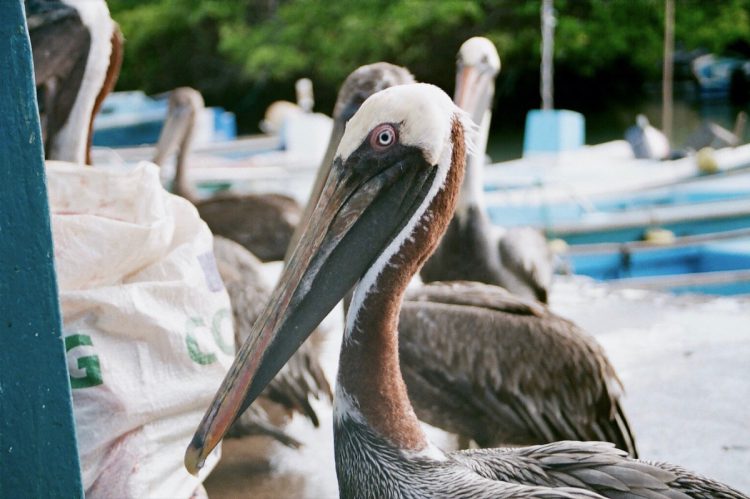
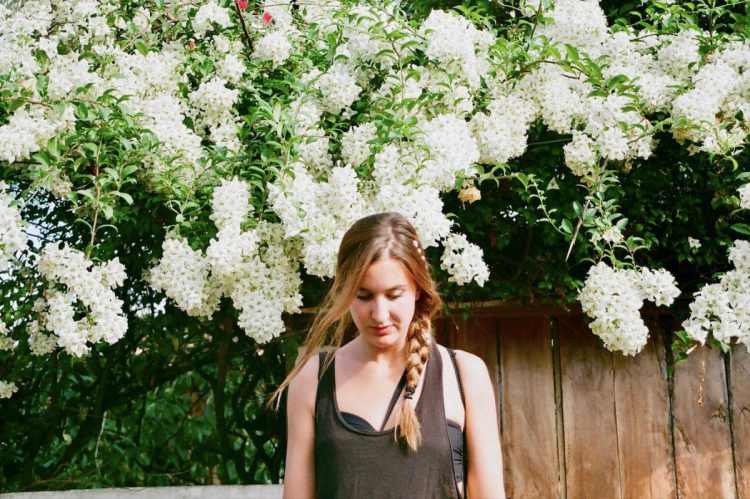

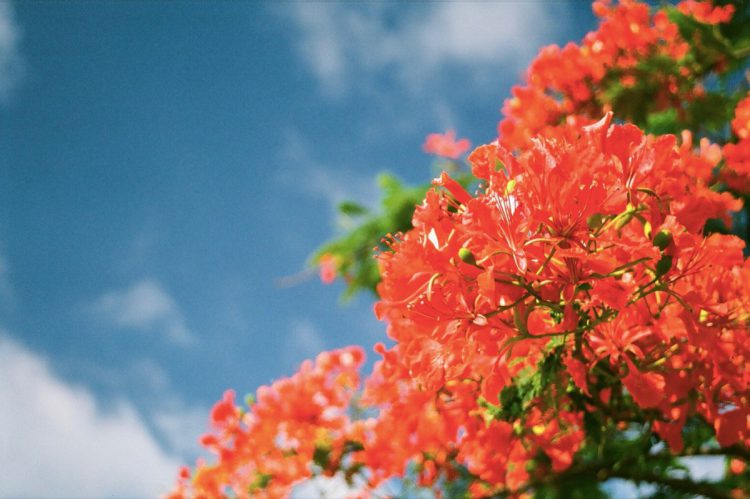
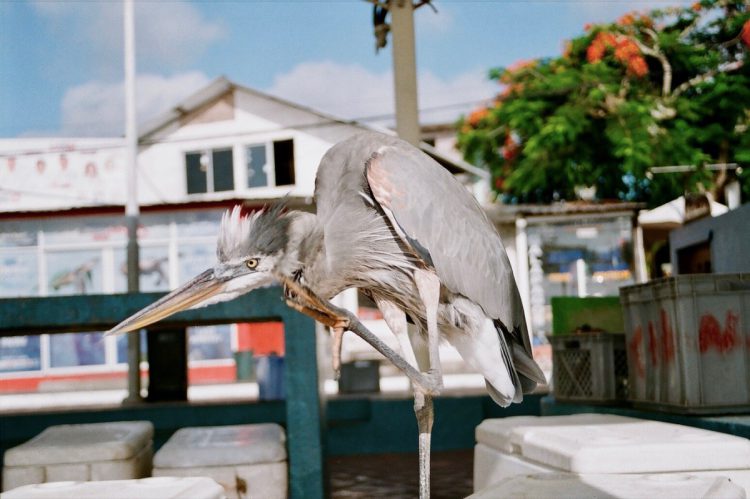




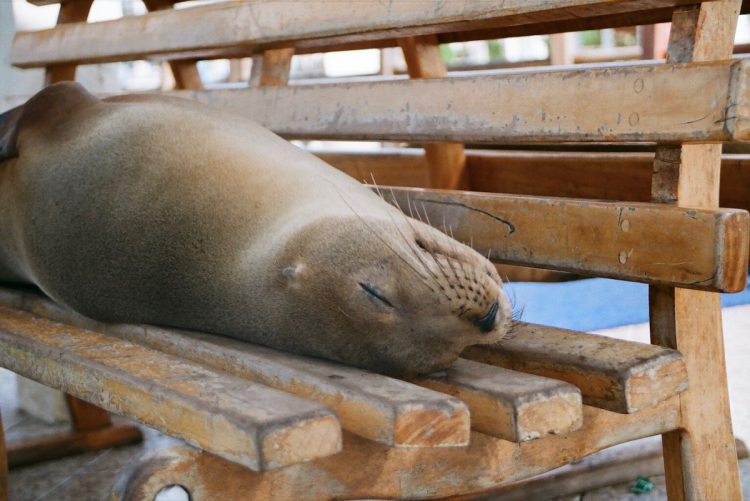
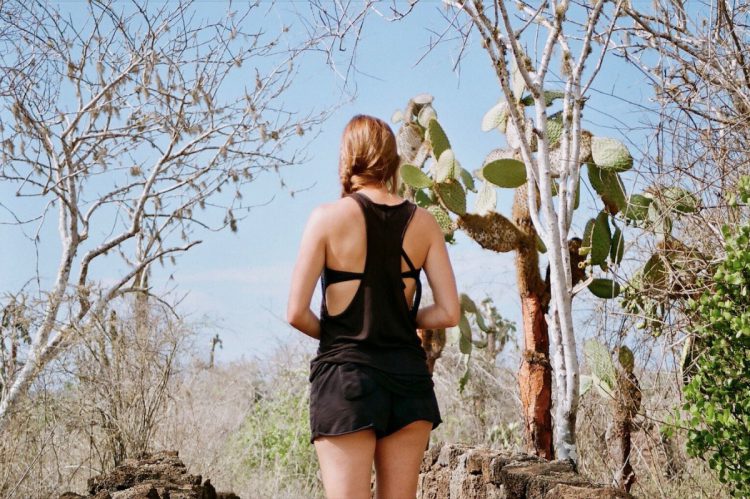

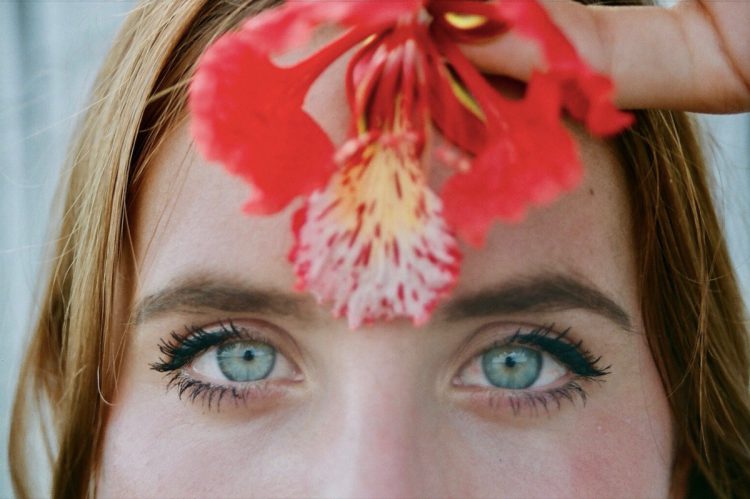

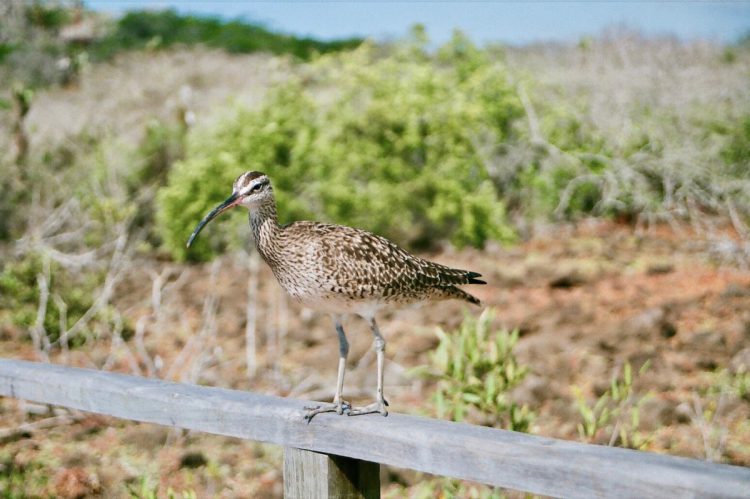
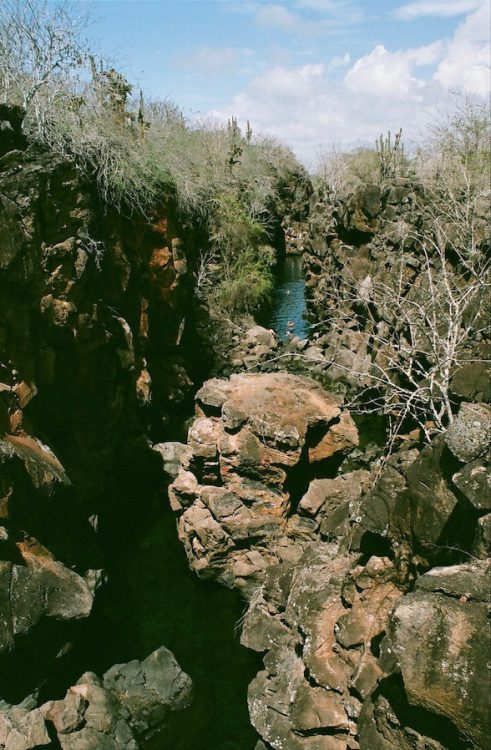
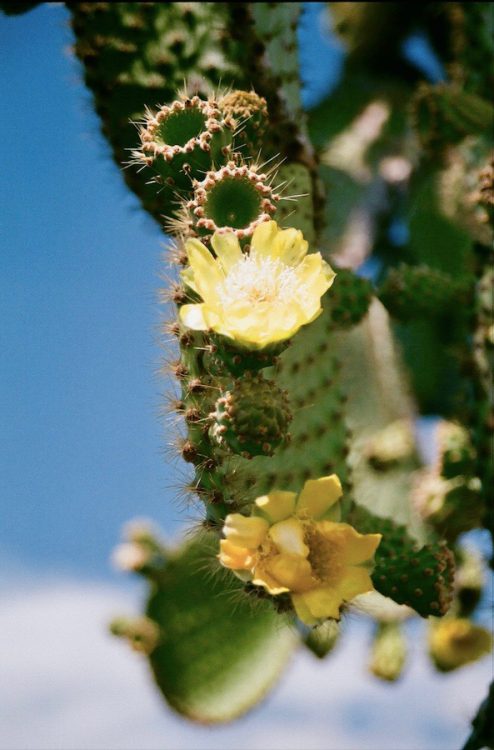
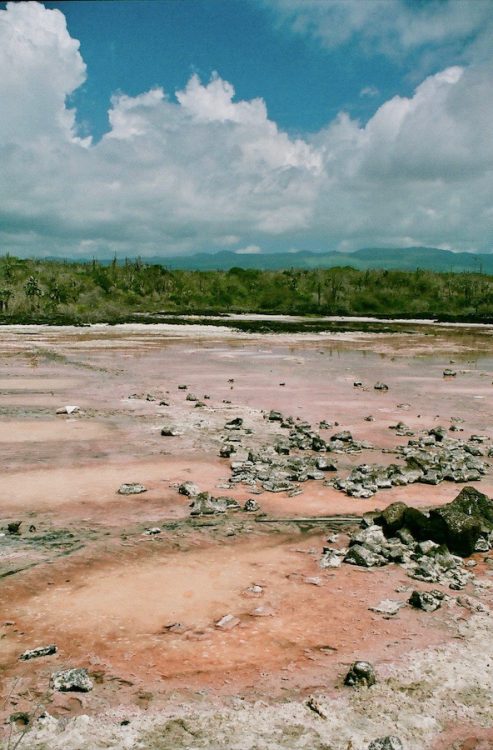
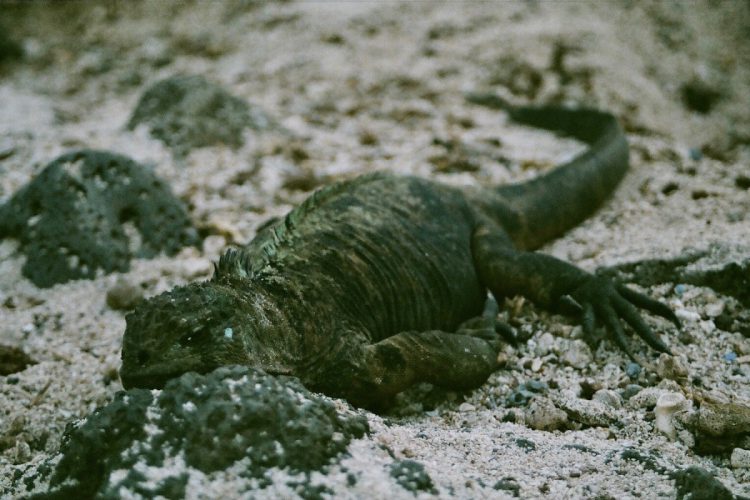
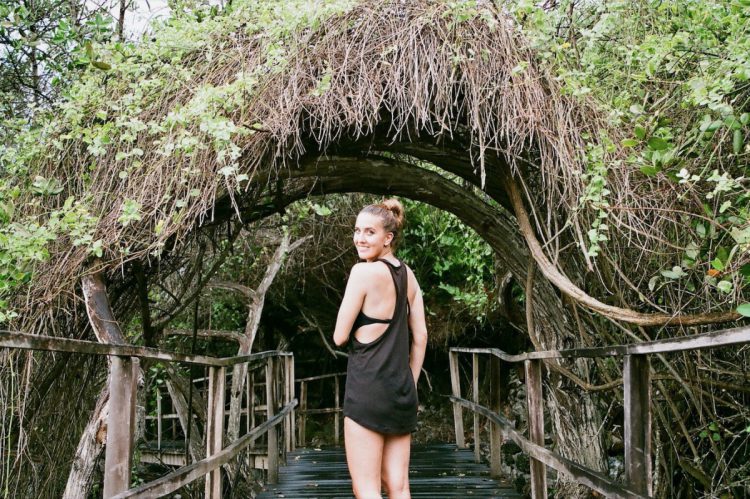
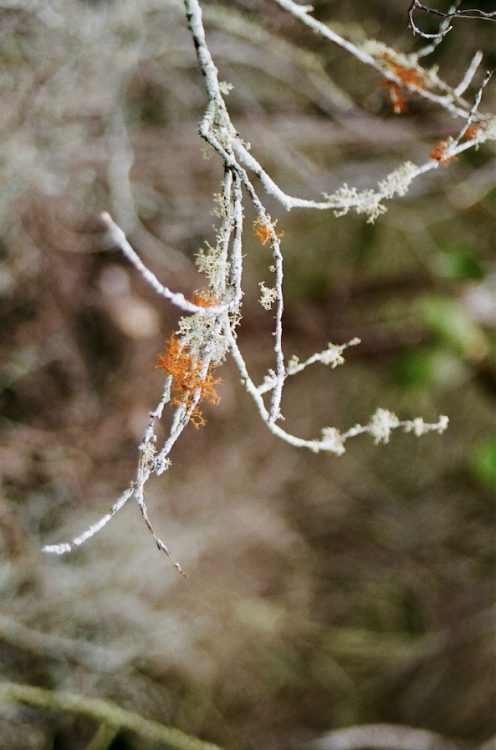
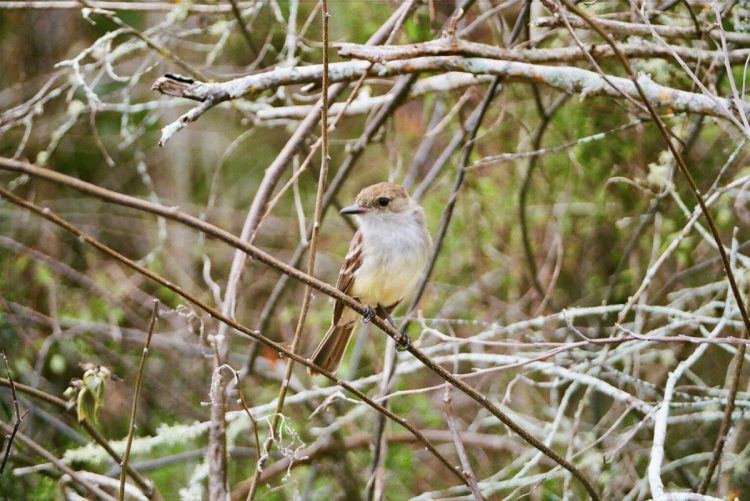



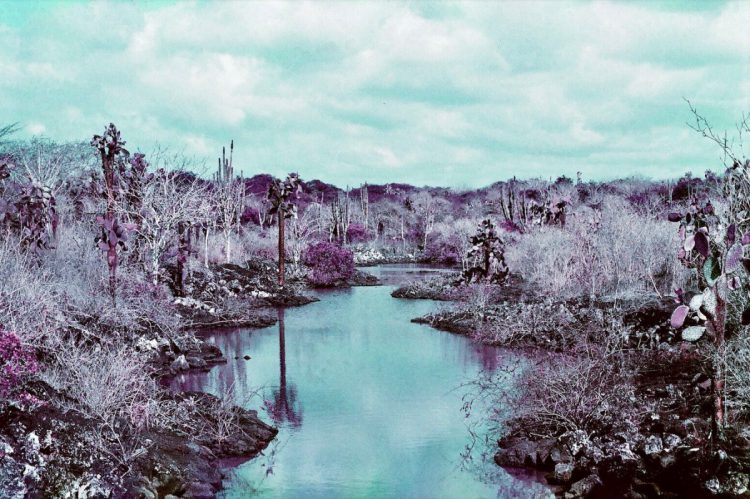


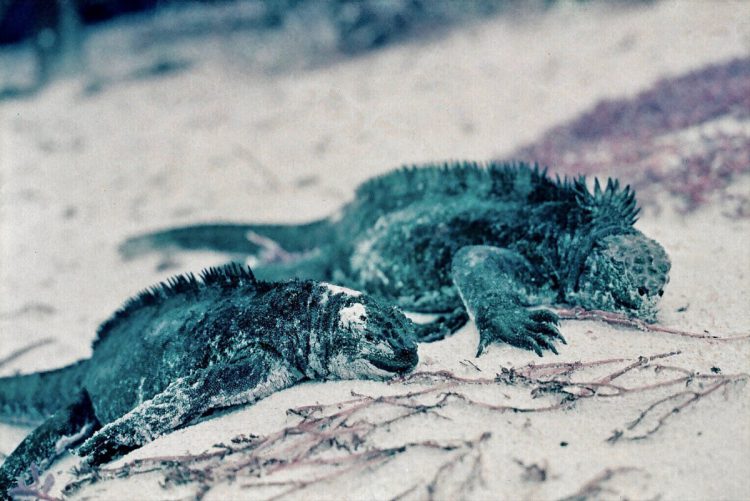

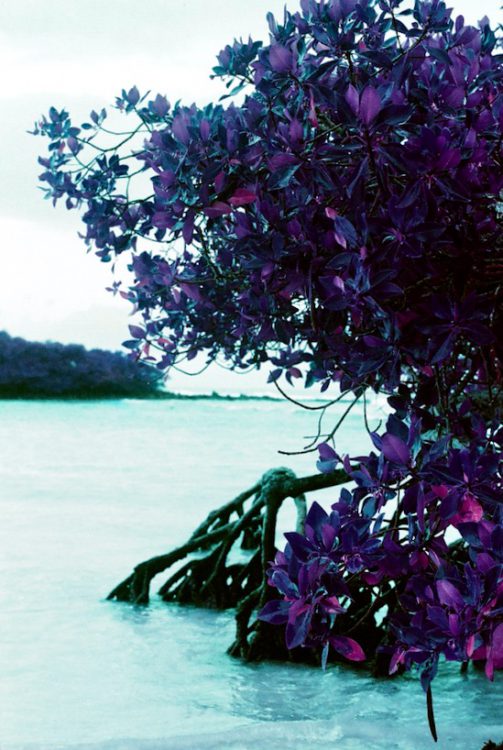

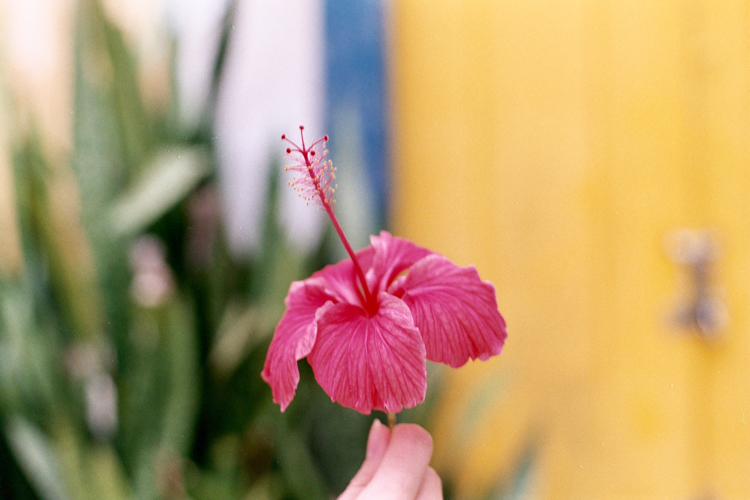

Leave a Reply